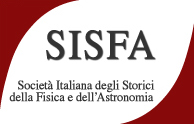Speaker
Description
In the first half of the 19th century, physicists were not very interested in induction generators. On the contrary, starting in the 1860s, numerous prototypes of electrostatic influence machines were invented, such as the Holtz or Toepler influence machine, both from 1865. These devices were soon put aside, because others were invented, which had higher performances, such as that of Voss (1880) or that of Wimshurst (1883) or that of Bonetti (1894). Interest in the new generators gave rise to many studies on electrostatic induction, although most of these dealt with technical problems or only described new experiences with these machines. However, such a radical change in high-voltage machine technology cannot be considered a technical matter alone. These instruments were generally used in scientific laboratories as devices for demonstrations or for teaching, that is, for mainly scientific purposes. The description of the performance of these devices led to heated contrasts between physicists. On the other hand, the interpretation of the new influence machines has made it possible to discuss the action of insulators in the different research perspectives developed in the second half of the 19th century.

